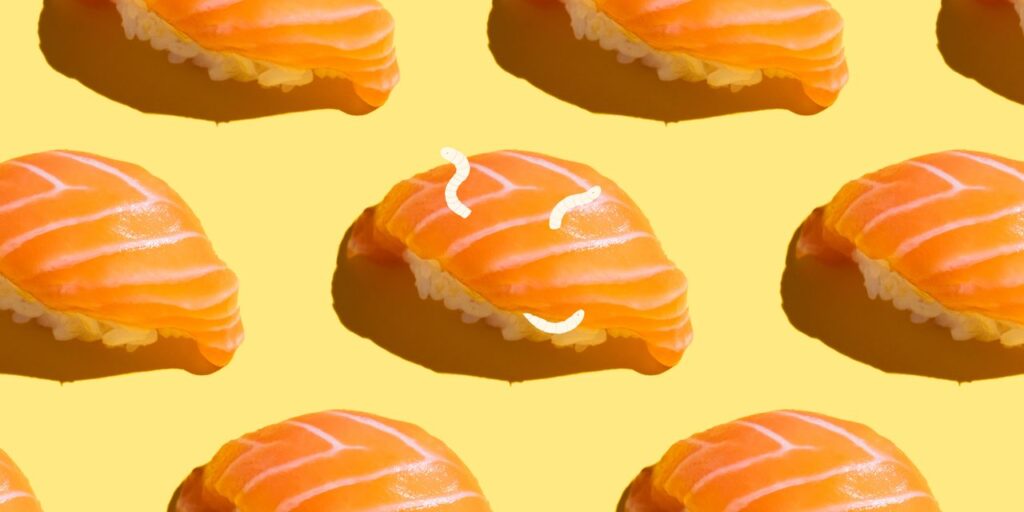Parasites are repulsive enough in the wild, but coming across one in your food takes the gross-out factor to a whole other level. Case in point: several eye-bleach-worthy TikToks that recently went viral for depicting live worms in fresh store-bought salmon. In one example shared in July, you can see a single hair-thin worm squirming atop an otherwise appealing orange fillet. “No more salmon sashimi for me,” the caption reads, followed by a single-tear emoji.
Unsurprisingly, commenters were equally as disgusted—and many took a similar scorched-earth approach. “This isn’t just one or two videos that I’ve seen of this…I’m done eating salmon and I don’t believe I’ll ever eat it again,” one person commented on another worm-in-salmon video last month.
Understandable due to the sheer ickiness of it all—but also maybe a tad bit overboard, according to a food safety expert.
While it’s not enjoyable to think about (and even less pretty to see in the flesh), parasites are a fact of life for many animals, and that can be reflected in animal products, Martin Bucknavage, MS, a senior food safety extension associate at Pennsylvania State University, tells SELF. Even though we’d like to think of our fish as pristine, for example, finding a worm or two in the raw stuff is actually a common occurrence, he says—and not necessarily an indicator that the affected item is less sanitary or lower in quality. (Particularly if it’s wild-caught, as the salmon depicted in most of the viral vids appears to be.)
That said, something tells us this revelation probably won’t do much to put your mind at ease. And you probably still have a lot of lingering questions after scrolling, like: How did the worms get inside the salmon in the first place? Can they make me sick? And, probably most pressing, Is there anything I can do to get them out?! Without further ado, here’s everything you need to know about worms in salmon—straight from a food safety expert, not social media.
How do worms actually get in salmon?
The tiny squigglers you see in these videos are likely Anisakis worms, a type of roundworm that infects marine animals in cold ocean waters, like those of the Pacific. While hardly the only marine parasite, they’re “the primary one that we see in seafood,” Bucknavage says.
In short, Anisakis worms hitch a ride on your fillet via the marine food chain. When infected mammals like whales and sea lions poop, they release Anisakis eggs into the water. When these eggs mature into larvae, they are eaten by crustaceans like crabs, lobsters, and shrimp, which, in turn, are eaten by fish and squid. Voilà—wormy salmon!
Importantly, salmon are not the only fish species heavily infested with Anisakis worms (others include cod, herring, and mackerel), so swearing off salmon specifically won’t fix the problem.
Wait, do they pose a health risk?!
Potentially, yes. In addition to marine animals, Anisakis worms are capable of infecting people and can “cause some issues” in the process, Buckanavage says.


